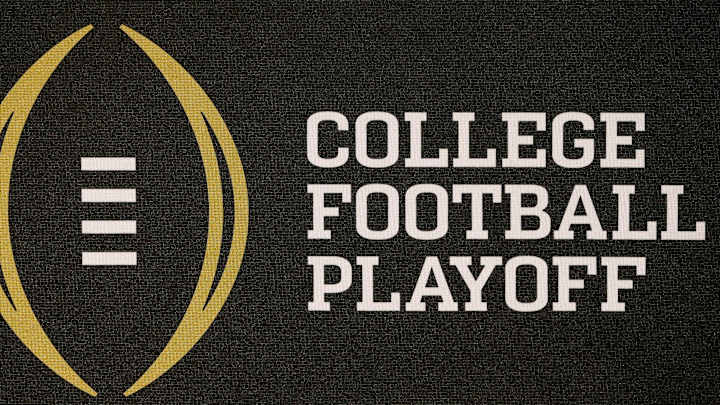Would an Eight-Team Playoff Have Solved This Season's Controversial Finish?

While top-level college football’s switch from the Bowl Championship Series, in which computer rankings and inscrutable formulas played an outsize role, to a four-team playoff was widely embraced, it didn’t take long for the calls for expanding the tournament field to dominate the conversation. The most popular alternative to the current four-team system was and is an eight-team playoff, which proponents argue would allow each champion of a Power 5 conference to get a chance at the national title. The current system expressly doesn’t allow that possibility—there are five power conferences (ACC, Big Ten, Big 12, Pac-12, SEC) and only four playoff spots. It’s simple arithmetic.
As you may have heard, this season’s field was particularly unbalanced from a conference perspective, because it was the first time in the playoff’s four-year history that two teams from the same conference—the big, bad SEC—accounted for half of the four spots. In the first and third years of the playoff (2014 and 2016), it was the Big 12 that got the short end of the stick, while the Pac-12 missed out on the fun in 2015. But this season, both the Pac-12 champion, USC, and the Big Ten champion, Ohio State, were left out of the playoff in favor of an Alabama team that didn’t even win its division.
Those lamenting Alabama’s inclusion in lieu of, say, Ohio State or UCF (more on them later) were dealt a blow by the Crimson Tide’s dominating 24–6 victory over Clemson, and Georgia’s thrilling double-overtime win over Oklahoma didn’t help either. Those two triumphs set up an all-SEC final that, despite Ohio State’s impressive display in a Cotton Bowl win over USC, seemed to validate the committee’s decision to go with two SEC squads. It has also given SEC supports fodder for their favorite arguments about the conference’s supremacy, despite its 4–5 record in 2017 bowl games.
The way things have played out wasn’t too popular outside the Southeast. But how avoidable was this outcome? Are the best two teams in the country facing off in Atlanta on Monday, or would things have gone differently had there been an eight-team playoff?
Because it doesn’t actually exist, it’s impossible to know what this hypothetical eight-team playoff would look like. Would the top teams get byes? Would each Power 5 champion get an automatic spot in the playoff, like in the NCAA basketball tournament? And would there be a spot reserved for the best Group of Five team, the way a New Year’s Six slot is set aside under the current system?
We’re going to answer the above three questions as logically as we can, then use those answers to help us fill out the most realistic eight-team bracket possible.
What would the format be?
In all likelihood, it would be a simple single-elimination style bracket with no byes for any teams: The No. 1 seed would play the No. 8 seed, No. 2 would play No. 7, etc. There also probably wouldn’t be re-seeding after each round as seen in the NFL, so if the No. 8 seed upsets the top seed, that team would play the winner of the No. 4-No. 5 game no matter what else happened in the quarterfinals.
It’s also realistic to think that the higher seed would host each quarterfinal game; it’s simply a logistical nightmare to find the number of neutral sites necessary otherwise. The semifinal and national championship game would surely be held on neutral ground, as is currently the case.
Would each Power Five champion get an automatic spot in the playoff?
Surely. One of the main draws of an eight-team playoff is avoiding a scenario in which a Power 5 conference champion—or two, as was the case this year—doesn’t get a chance to compete for the title. Thus, USC would have gotten the nod this season.
Would a spot be reserved for the best Group of Five team?
It’s trickier to guarantee this than it would be to send all five Power 5 champions, because in most years there simply isn’t a Group of Five team good enough to deserve a spot in the field. In 2014, for example, the highest ranked Group of Five team after the conference championship games was two-loss Boise State at No. 20. In 2015 it was Houston at No. 18, and last year it was Western Michigan at No. 15.
This isn’t to say UCF wouldn’t have made an eight-team playoff this year. While the Knights finished the season ranked 12th, it’s hard to imagine that the committee wouldn't give an undefeated UCF team a chance by throwing them the No. 8 seed. Former UCF and current Nebraska coach Scott Frost has a theory that plays into that hypothetical. He says the committee made a “conscious effort” to keep UCF out of the playoff, keeping a buffer between UCF and the top four spots going into championship weekend to prevent a scenario in which losses by the teams immediately in front of the Knights would leave the committee virtually no choice but to give them a spot.
There’s also the less salacious reasoning, the fact that UCF didn’t boast a really good win until it beat Auburn in the Peach Bowl. Whatever the reason for their comfortable exclusion from the playoff (the Knights were eight spots away, after all), leaving an undefeated team out of an eight-team playoff would be even harder for the committee to explain. They wouldn’t have to, because UCF would have found a way to sneak in as the No. 8 seed.
What would the bracket look like?
This year’s final College Football Playoff rankings, from one to eight, was as follows: Clemson, Oklahoma, Georgia, Alabama, Ohio State, Wisconsin, Auburn and USC. UCF's inclusion means that one of those teams would be knocked out of this hypothetical eight-team party. Going straight by the numbers, that team would be three-loss Auburn, which would be the exclusion that makes the most sense. Instead of having three SEC teams in the playoff, there would be two SEC teams, two Big Ten teams, an ACC team, a Big 12 team, a Pac-12 team and UCF from the AAC.
So, without further ado, the eight-team playoff for this season would look like this:
No. 8 UCF at No. 1 Clemson
No 5. Ohio State at No. 4 Alabama
No. 7 USC at No. 2 Oklahoma
No. 6 Wisconsin at No. 3 Georgia
Would we get another all-SEC final?
There are a few important takeaways from this, the first being just how marvelous this would be for college football fans—UCF getting a shot at the defending champs, Sam Darnold vs. Baker Mayfield and a rematch of the semifinal classic between Ohio State and Alabama.
Another is just how difficult Alabama's and Georgia's path to the title game would be. Alabama would have to get past an ultra-talented Ohio State team playing its best football of the year just to get to the semi, while Georgia would draw a Wisconsin team that was one drive away from finishing undefeated before potentially meeting a team it just edged in double overtime.
We're not going to try to project who would have won this bracket, but it’s clear that simply adding another round to the playoffs lessens the likelihood of any teams from the same conference meeting in the championship game. Georgia and Alabama could well have ended up playing each other in this scenario, but at least there would be significantly less doubt as to whether they were the two best teams in the country.
The reality, as tough as it might be to swallow for some, is that the SEC did produce the two best teams in the country this year. But let’s not act like this is some sort of problem. This is the first year this has happened since 2012, and like in 2012, it took a unique confluence of events for it to come to fruition. Quite simply, it isn't the committee's job to make sure multiple conferences are represented, and if it were, the twists and turns of a full regular season would likely force them to make equally controversial decisions.
